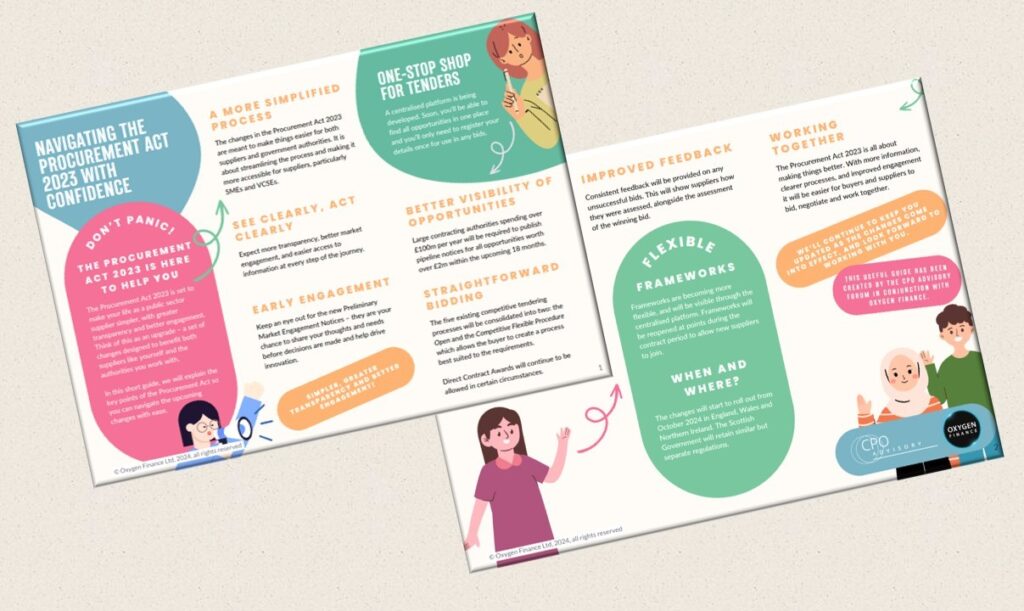In our recent webinar, “What Public Sector Buyers Want (and What Sellers Need Buyers To Know)“, we had the privilege of hosting Peter Lawton, Procurement Lead from South Tyneside Council, and bidstats’ Sales Director Chris Williamson to get their take on what makes for a good buyer-supplier relationship.
With hundreds of attendees, the Q&A session received many insightful questions, but due to time constraints not all queries could be addressed. In this article, we put a dozen of the most pressing unanswered questions to Peter and Chris to get their expert take.
Question 1: Frequently, receptionists won’t disclose names or contact details, and public sector staff may not be accessible on LinkedIn. How can we best identify the appropriate point of contact at a council?
Chris Williamson: Some information is more readily available than others, and the availability of data varies significantly by buyer. However, information can be found in several places, such as Award Notices, supplier engagement events, and council websites. You should also review published council documents, such as cabinet minutes or strategy papers, and LinkedIn is a great tool to engage with contacts who have profiles as part of your outreach and information gathering strategy. Where that fails you could try sending Freedom of information requests to organisations using tools such as WhatDoTheyKnow, although if the information isn’t already published some organisations are unwilling to volunteer it. Oftentimes it just comes down to perseverance and playing the long game.
Peter Lawton: At South Tyneside Council we have a Procurement support Desk with a generic email address that you can find on our website. We then filter incoming messages to that address and forward them to the most appropriate member of the team, so don’t discount generic email addresses.
Question 2: How can you find out about early engagement opportunities and soft market testing events?
Chris Williamson: Soft market testing, supplier events or market engagement events are typically published in the form of Prior Information Notices (known as PINs) on the procurement portal that the buyer uses. Portals such as Contracts Finder and Find a Tender Service are good options for this, or you could use an aggregation service like bidstats to do the searching for you.
Peter Lawton: In addition to Chris’ recommendations, I would also suggest that you register for and use e-tendering platforms. For example, NEPO covers South Tyneside and all the twelve North-East Local Authorities.
Question 3: We often hear about the importance of relationships. However, as these connections are naturally strongest with existing suppliers, how can new suppliers make themselves known?
Chris Williamson: One of the most successful ways to get noticed by Buyers is to ask existing Buyers for introductions into other Authorities as they often work closely together, and often people may have moved between the two organisations. Failing that, researching the organisation and relevant stakeholders, understanding the challenges they face and personalising your approach to them is key to a good cold outreach strategy. Lead with the problem and how you could solve it, adding value at every opportunity, and don’t be afraid of, or get disheartened, if you keep hearing ‘no’.
Peter Lawton: Market stimulation is very important. Experience tells me that in a lot of instances services are looking for fresh suppliers to bring a new impetus where things may have gone stale. Take part in soft market testing if asked and participate in market engagement events whenever possible.
Question 4: Social Value and Net Zero are becoming increasingly crucial in bidding processes. However, there’s a significant gap in clients’ understanding and targets. How can we establish a more standardized approach across the board?
Chris Williamson: Each organisation has their own criteria for both Social Value and Net Zero based upon their own local challenges and policies. There are guidelines which can be found here, along with specialists like the Social Value Portal which offer more in-depth guidance. Ultimately though it’s down to the bidder to make themselves aware of the policies and requirements of the buyer, and review them each time on a bid-by-bid basis.
Question 5: What innovative approaches have you noticed in responses regarding social value? What does a strong response look like, and can you provide any examples?
Peter Lawton: You can be quite creative when it comes to Social Value. Here’s a couple of examples. Firstly, on a large collaborative Stationery Contract, we able to secure a post to look at Modern Slavery, working back through the supply chains to ensure this problem was not present, and if necessary, eradicated as part of our contract. In another instance, we did something at a local level to support Care Leavers with ICT, with a donation of refurbished laptops that also allowed for connectivity to web services to help the Care Leavers with their independence.
Question 6: Sometimes, clients give us too much information, with hard to follow, poorly organised, ‘pasted-in’ sections that don’t make sense, and filenames made up of random letters and numbers. Shouldn’t procurement teams aim for fewer but better-quality documents, and where that’s not happening, how can I raise this as an issue?
Peter Lawton: I would suggest in the first instance that this is fed back to the procuring officer. However, I would recommend that this is escalated if the response you receive back is not satisfactory or your issue is not resolved.
Chris Williamson: Unfortunately, for buyers sometimes it’s easier and more practical for them to track documents alphanumerically within their ERP systems. Yes, you may be bidding on one contract with them, but they could be managing hundreds of procurement exercises with thousands of documents. However, this isn’t to say that the quality of information couldn’t be improved in a number of cases. Ultimately though, it’s down to each organisation to manage their own documentation.
Question 7: Outdated information in repeat tenders is a common issue. How reliable is the process on the buyer’s side to ensure that relevant and up-to-date information is consistently reviewed and updated to incorporate the latest innovations?
Peter Lawton: Unless you are procuring something simple like a list of specified goods, specifications for relets should always be reviewed.
Question 8: Do you have any helpful links about the new Procurement Act and its changes, particularly regarding the shift from MEAT to MAT and increased pipeline transparency?
Chris Williamson: The Government Commercial Function are providing regular knowledge drop updates which you can find here. You can also find the latest information here on the Procurement Act, and how to get ready for it, here. As local authorities themselves are given more information, I would expect to see councils produce their own guidance for suppliers looking to trade with them.
Question 9: How will the new NEMCA mayor change procurement in the North-East?
Peter Lawton: The new North-East Mayoral Combined Authority will focus on cross-cutting service delivery across seven North-East councils; two unitary authorities (Durham and Northumberland) and five metropolitan boroughs (Gateshead, Newcastle, North Tyneside, South Tyneside, and Sunderland). It will focus on areas such as such as Transport, Adult Education and Skills, and Housing to name a few. This will be funded by additional monies secured from Central Government to support the regions and will not be replacing what the Local Authorities currently do, but will further support infrastructure and upskilling.
Question 10: Why do Authorities often not want to share their budget during the tender process?
Chris Williamson: It’s possible that some authorities may keep their budget close to their chest to keep suppliers guessing and encourage more competitive pricing during tender exercises. However, it’s also the case that authorities don’t always know what their spending on certain products, services or works is likely to be, and so are unable to specify a budget.
Peter Lawton: Spend through frameworks will always be estimated and published via contract processes, where appropriate or known.
Question 11: We have recently been disqualified from a tender that we were confident in winning because our price was apparently too low, even though it had been accepted by other Councils. We feel the process has been poorly managed with submission documents missing and incorrect information, resulting in the deadline moving several times. Who do we appeal to?
Peter Lawton: Without having all the facts, my advice is that you would write to the purchasing body or council in question, asking for a full explanation. If you feel this is not satisfactory then you always have the right to challenge. This would need to be done ideally prior to the cooling of period (often referred to as the Alcatel period) for the contract award through the courts. This can be costly. If you wrote to the procuring authority as part of ongoing dialogue, then they would ideally carry out an internal review of the process to ensure that it met all the correct standards.
Question 12: Many opportunities seem excessively localised, lacking regional strategies. Consequently, they tend to be too small and fail to align with broader national priorities. This leads to missed economies of scale and wasteful spending through complex and duplicated processes. Do you believe that some buyers are failing to maximise supplier benefits due to their current procurement methods?
Chris Williamson: Leveraging buying power to realise economies of scale can be a great way to improve the outcomes from a procurement process. Lots of councils are realising this and collaborating on procurement exercises to realise this potential. However, there are also many examples where this has the opposite effect, and by working with local, SME businesses, better value for money can be achieved. Ultimately, it comes down to the procurement team doing their research and having access to quality financial data to make a data-based decision on which option best works for any single procurement exercise.




